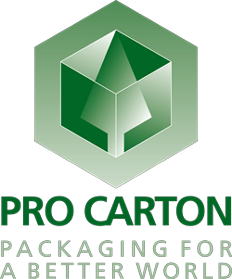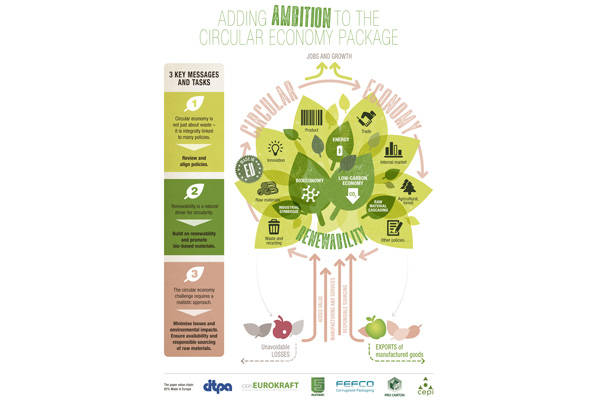European Commission Vice-President Frans Timmermans promised a new initiative on the Circular Economy which adds ambition to the waste-based proposal withdrawn last year. Pro Carton together with other European paper based packaging associations, has created an Infographic to illustrate our industry’s vision of an ambitious Circular Economy¹.
The tree Infographic is a representation of the areas of policy which the paper packaging associations including Pro Carton, would like to see in a more ambitious Circular Economy proposal. The original concept of just dealing with waste management issues has been expanded to show that the circle should now include renewability and bioenergy. The tree diagram is apt, as trees provide the original raw material for paper based packaging and are a renewable resource. In Europe, new growth exceeds the wood harvested in an area equivalent to 1.5 million football pitches per annum.
The Infographic has three key messages:
- The Circular Economy is not just about waste, it is integrally linked to many policies, as illustrated by the overlapping leaves of the tree. The Paper based packaging industry calls on the European Commission to ensure that the new Circular Economy packaging takes these into account.
- Renewability is a natural driver for circularity. The circle is only half complete when it deals only with waste management and the input of fresh raw material which is renewable is the dynamic other half of the circle. Renewability, resource efficiency and responsible sourcing of natural bio-based renewable materials should be at the heart of a circular economy.
- The circular economy challenge requires a realistic approach as there will be some unavoidable losses from the system which have to be disposed of in a responsible way. These losses and their environmental impacts should be minimised.
This Infographic is timely, as the European Commission has recently published a consultation on a Roadmap for the Circular Economy, which aims to identify actions to overcome shortcomings and create conditions for the development of a Circular Economy in Europe.
¹ The Circular Economy is an alternative to a traditional linear economy (make, use, dispose). In a Circular Economy, resources are kept in use for as long as possible, the maximum value is taken from them whilst in use, then efforts are made to recover, recycle, repair and reuse products or materials at the end of each service life.
For further information, please contact Jennifer Buhaenko




